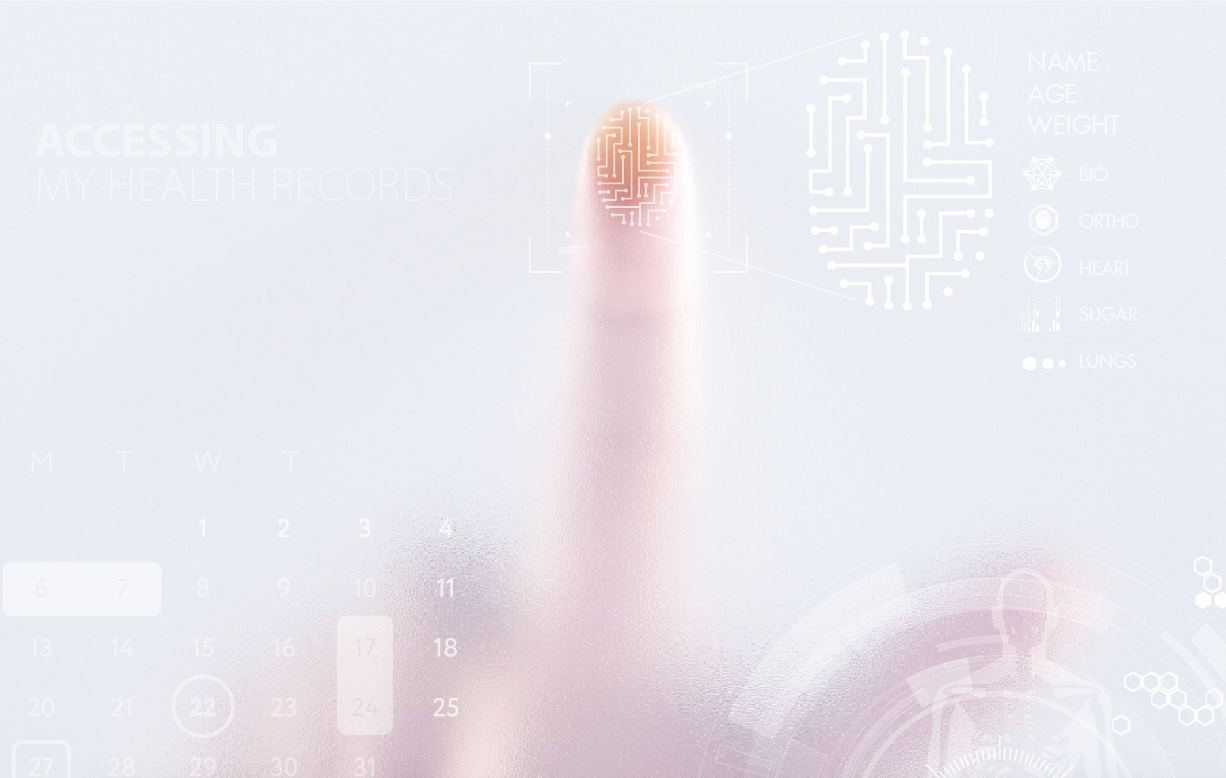Artificial intelligence promises to upend entire industries and pharmacy is far from immune – here’s how AI can remake drug discovery, customer service, training and more.
Artificial intelligence is the sleeping giant that’s ‘giving the entire medical field super powers’, according to its proponents.¹
That may sound terribly exciting or just plain terrible, depending on whether you see AI as a utopia of benevolent robots serving humanity, or a tide of destruction set to wash away much of the workforce.
The reality is, however, that AI is already improving pharmacy. It’s super-charging drug development, improving stock management and dosing, aiding better patient outcomes, and improving service delivery in community pharmacies. It would be ‘very, very foolish’ to ignore how AI is already changing pharmacy, warned co-owner of Epic Pharmacy and PSA18 speaker Cathie Reid.
‘You do see this in healthcare quite a lot – people say: “oh it’s fine in broader retail but it will never happen in healthcare”,’ observed Ms Reid, who is also chair of Flamingo AI, an artificial intelligence and machine learning company that provides cognitive virtual assistants.
‘Yes it might take a little longer, and have some bigger constraints than in a standard airline booking transaction, but it’s going to happen in healthcare.’
Artificial intelligence is defined as the ‘theory and development of computer systems able to perform tasks normally requiring human intelligence, such as visual perception, speech recognition, decision-making and translation between languages’.²
Of course AI is heavily data-driven, making it a good fit with the healthcare system which holds almost a zettabyte (that’s almost a trillion GB) of data in the US alone.³
Sources of data include electronic health and medical records, the Internet of Things (wearables, apps, medical devices and sensors), genome registries and even insurance providers.
Not surprisingly then, the pharmaceutical industry has been an enthusiastic adopter of AI.
Accelerating drug development
There are at least 18 pharmaceutical companies and more than 70 startups currently using AI to make drug discovery, development and repurposing cheaper, faster and better.4
They’re leveraging AI to aggregate and synthesise information, understand mechanisms of disease, repurpose existing drugs and find novel drug candidates.
Take IBM’s Watson for Drug Discovery, for example. It has ingested 25 million Medline abstracts, more than a million medical journal articles, four million patents, and counting.5
Compare that to the average researcher, who reads between 200 and 300 articles in a year 5, and you can see the potential.
AI is also being used to design drugs, design and run preclinical experiments, and design and recruit for clinical trials.
The public-private Accelerating Therapeutics for Opportunities in Medicine (ATOM) Consortium aims to use AI to reduce the time between identifying a drug target and being patient-ready (currently four to six years) to just 12 months.6
Inroads are being made. For instance, Novartis claims it has reduced patient enrolment times by 10-15% by analysing clinical trial operations with machine learning.
Meanwhile, BenevolentAI estimates it can deliver a 60% cost and timeframe reduction by slashing the amount of trial and error associated with designing a drug candidate. In 2016, it identified five ALS drug candidates within a week.
Stock management and dosing in hospitals
AI isn’t just the remit of the pharmaceutical industry. It’s also being used in hospital settings to improve pharmacy workflows, promote quality use of medicines and reduce drug spending.
One prominent example is US not-for-profit Sutter Health, which late last year announced a collaboration with AI company Qventus. ‘The Qventus platform brings together hospital, patient and pharmacy data in real-time … [it] identifies patients who may require additional attention and nudges the … pharmacist to take needed actions,’ said Sutter Health.
In Australia, hospital pharmacies are already using robotic drug dispensaries in a bid to improve safety, efficiency and stock management.
At Perth’s Fiona Stanley Hospital, senior pharmacist Ken Tam said process automation had delivered a 40% reduction in wastage due to product expiration, and 68% decrease in clinical staff having to manually submit replenishment orders.
‘The system manages approximately 18,000 individual drug lines across 100 clinical areas, and processes approximately 12,000 drug transactions per day,’ he said.
Community pharmacy
Community pharmacies aren’t being left out, either. They already have a number of AI-enhanced apps for improving patient outcomes at their fingertips.
One Australian example is ePAT Technologies’ PainChek, dubbed the world’s first smartphone pain assessment and monitoring device. ‘It uses automated facial recognition and analysis to detect the presence of pain by identifying facial micro-expressions,’ ePAT’s Mustafa Atee said.
‘That data, plus other non-facial pain cues, are used to calculate a pain intensity score.’ The genesis for PainChek came from an experience Mr Atee had during his first community pharmacy placement.
‘An elderly man verbally abused me for no apparent reason. The pharmacist in charge told me he had dementia,’ he said. ‘It stuck in my head that there must be some underlying trigger, some unmet need: perhaps pain.’
Five years in the making, PainChek is now TGA approved for non-verbal adults and the team is working on a product for infants.
Another Australian startup, ScalaMed, has its own solution for community pharmacy – a blockchain prescription exchange system that gives patients secure, complete and portable prescriptions. Founder Tal Rapke said AI could help address information gaps.
‘The intelligence enables more information to go to the patient, which they can feed back to the clinician because they don’t have the pop-up fatigue that pharmacists sometimes get,’ Dr Rapke said.
‘The app sends alerts like: “You’ve just been prescribed a drug that you’re allergic to”, or “You shouldn’t take this over-the- counter medicine because it interacts with something you’re on”.’
The startup is now working to incorporate AI leveraging genomic and biometric data. ‘The app can say: “You’ve just been prescribed the following dosage. You may want to mention to your doctor that you’re a fast metaboliser of a particular molecule and they may want to start you on a different dosage”,’ Dr Rapke said.
Ms Reid said community pharmacists could also expect their dispensing software to become more algorithm- and AI-driven.
‘It will reduce the dependence on a pharmacist to hold all the knowledge around things like medication interactions,’ she said.
Digital prescriptions
This does not mean robots are going to steal pharmacists’ jobs. But it does mean pharmacists should prepare now to capitalise on opportunities AI will bring.
One way to start preparing is around digital prescriptions, Ms Reid said. ‘Doctors, and potentially pharmacists, will be prescribing digital tools – apps, sensors or wearable devices – that help a patient manage and monitor their health,’ she said.
For example, late last year the FDA approved Proteus Discover – a digital pill with an embedded sensor to track if patients are taking their medicine properly.
Or those wanting to quit smoking could be prescribed a wearable, such as Somatix, which uses predictive analytics and machine learning to analyse real-time hand gestures before the app launches a personalised intervention.
Ms Reid said it was important for pharmacists to start positioning themselves at the forefront of managing and delivering these prescriptions.
‘In the same way that you have to counsel, train and support a patient with a physical prescription, there’s going to be the same need to do that with digital prescriptions,’ she said. ‘The risk is that when change happens, there will be other parties who will have their hands up to play that role.’
Digital relationships
AI itself could provide an opening for pharmacists looking to ‘fill’ these digital prescriptions. ‘Part of the preparation is figuring out how pharmacists can form digital relationships with their customers now – so that they’ve established a relationship of trust and patients are used to exchanging data,’ Ms Reid said.
One Australian pharmacy group doing that is National Pharmacies. It has introduced Amazon Rekognition – an image analysis tool – to its in-store kiosks.
Once a registered National Pharmacies user authenticates with facial recognition, they can access at least seven different software platforms which allow them to update their membership details, find previous purchases or book health checks with a pharmacist.7
Another way to start building digital relationships is through chat bots – something US pharmacies are leading the way in.
Challenges and opportunities
The elephant in the room is that AI in medicine, and pharmacy in particular, faces some significant hurdles. To start with, most medical data is private, cannot be accessed legally and is siloed within different organisations.
Another barrier is that vast amounts of health and medical data is messy and lacks consistency and standardisation, making it hard for computers to synthesise. Mr Tam also pointed out the ‘relative infancy of the field and the associated limited talent pool, a lack of understanding of what AI can offer, and high implementation costs’.
Regardless, AI presents an opportunity for pharmacists to streamline their workflows, improve decision making and delegate repetitive tasks. For savvy pharmacists, what that means is more time to focus on being human and delivering quality patient care.
Ms Reid said: ‘It’s going to be really important for pharmacists to look critically at what they do now and think about the likelihood of a sophisticated computer doing that just as well.
‘You’ve got to educate yourself and think about where the opportunities lie in AI because if you just put your head in the sand, that’s a guaranteed way for it to be a negative for you.’
References
¹ NBC News. Why Big Pharma and biotech are betting big on AI. 2018. At: https://www.nbcnews.com/mach/science/why-big-pharma-betting-big-ai-ncna852246. The Next Web. AI is giving the entire medical field super powers. At: https://thenextweb.com/artificial- intelligence/2018/02/05/ai-is-giving-the-entire-medical-field-super-powers/.
² Oxford dictionaries. Artificial Intelligences. At: https://en.oxforddictionaries.com/definition/artificial_intelligence.
³ Tech Emergence. Where healthcare’s big data actually comes from. 2018. At: https://www.techemergence.com/where-healthcares-big-data-actually-comes-from/.
4 BenchiSci. Pharma companies using artificial intelligence in drug discovery. 2018. At:https://blog.benchsci.com/pharma-companies- using-artificial-intelligence-in-drug-discovery.
5 IBM. IBM and Pfizer to Accelerate Immuno-oncology Research with Watson for Drug Discovery. At: https://www-03.ibm.com/press/uk/en/pressrelease/51192.wss.
6 UCSF Innovation, Technology and Alliances. Accelerating Therapeutics for Opportunities in Medicine (ATOM) Collaboration. At: https://ita.ucsf.edu/news-and-events/accelerating-therapeutics-opportunities-medicine-at-om-collaboration-lawrence.
7 IT News. National Pharmacies uses in-store facial recognition. At: https://www.itnews.com.au/news/national-pharmacies-uses-in-store-facial-recognition-475375.
8 ICON. The power of AI to transform clinical trials. At: https://www.iconplc.com/insights/blog/2018/05/18/the-power-of-ai-to-transform-clinical-trials/index.xml.




 ‘We’re increasingly seeing incidents where alert fatigue has been identified as a contributing factor. It’s not that there wasn’t an alert in place, but that it was lost among the other alerts the clinician saw,’ Prof Baysari says.
‘We’re increasingly seeing incidents where alert fatigue has been identified as a contributing factor. It’s not that there wasn’t an alert in place, but that it was lost among the other alerts the clinician saw,’ Prof Baysari says.


 Beyond the arrhythmia, AF often signals broader pathological processes that impair cardiac function and reduce quality of life and life expectancy.5 Many of these conditions are closely linked to social determinants of health, disproportionately affecting populations with socioeconomic disadvantage. Effective AF management requires addressing both the arrhythmia and its underlying contributors.4
Beyond the arrhythmia, AF often signals broader pathological processes that impair cardiac function and reduce quality of life and life expectancy.5 Many of these conditions are closely linked to social determinants of health, disproportionately affecting populations with socioeconomic disadvantage. Effective AF management requires addressing both the arrhythmia and its underlying contributors.4  C – Comorbidity and risk factor management
C – Comorbidity and risk factor management Warfarin
Warfarin







